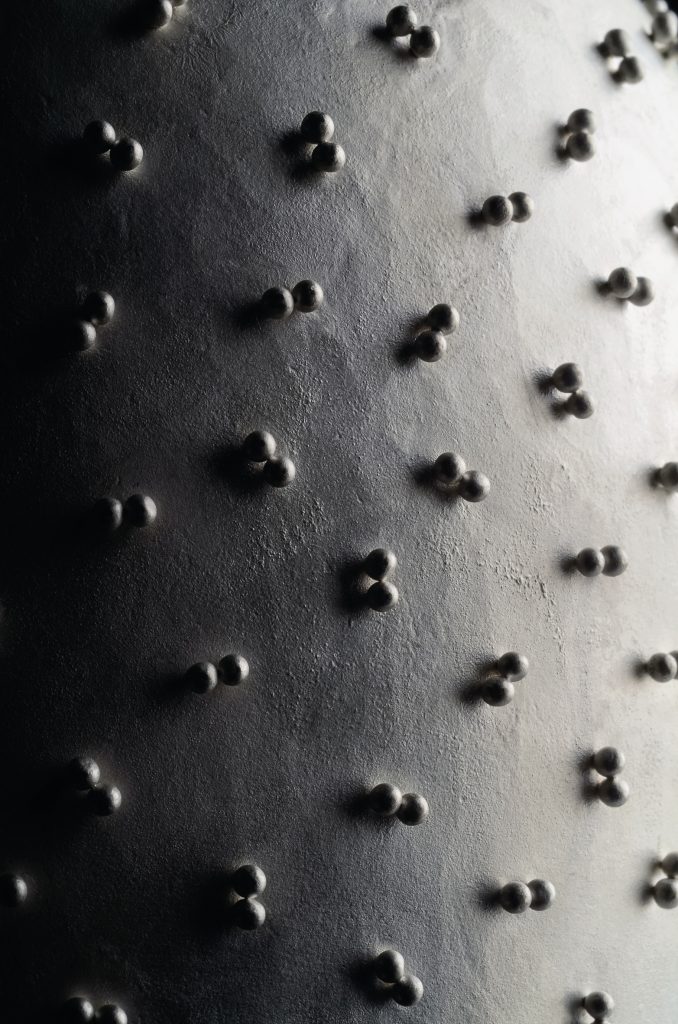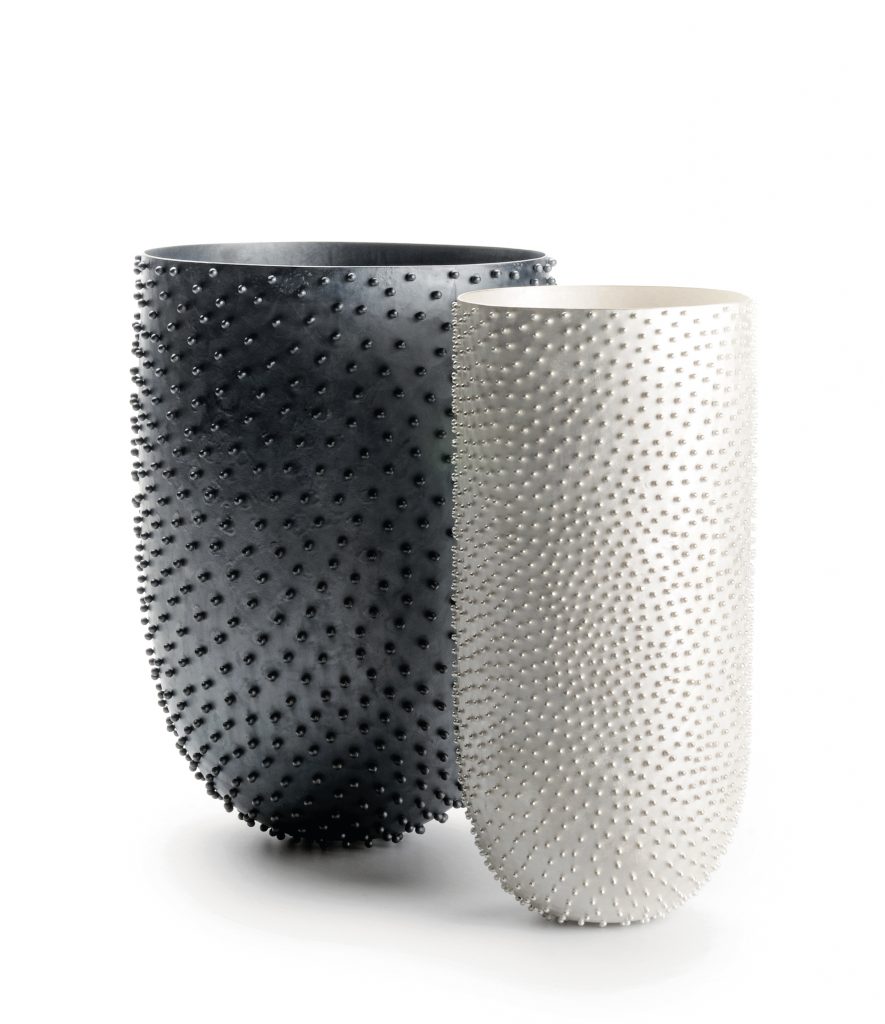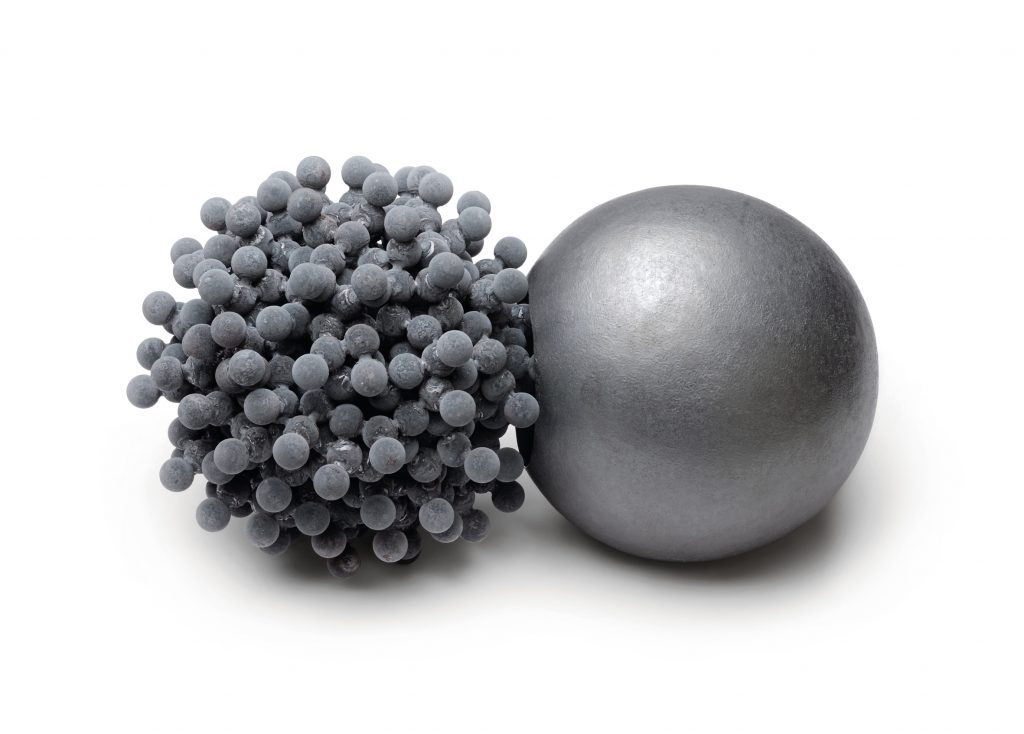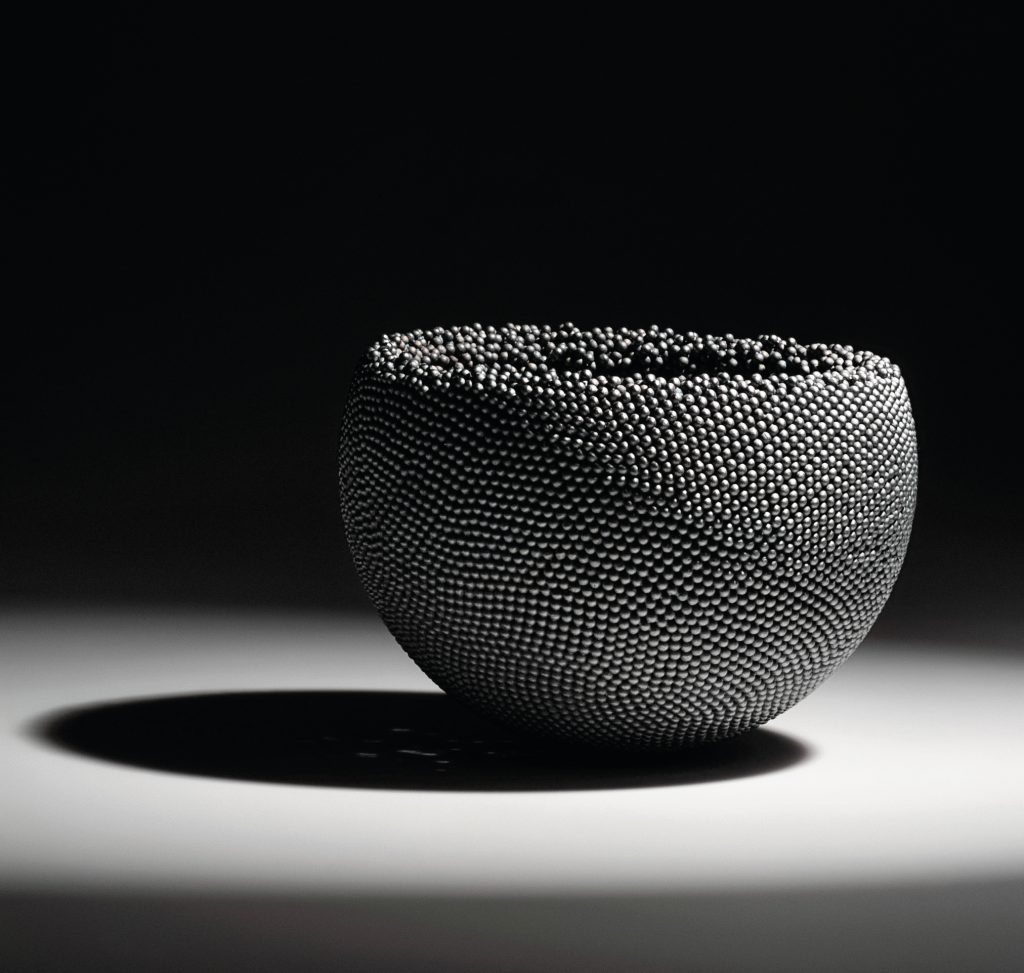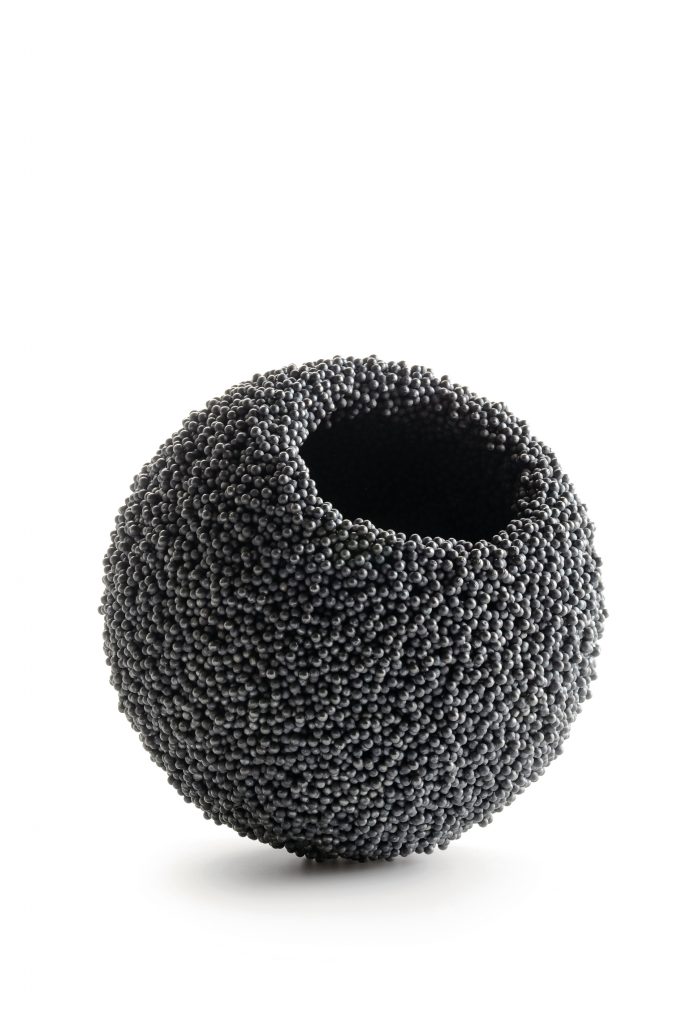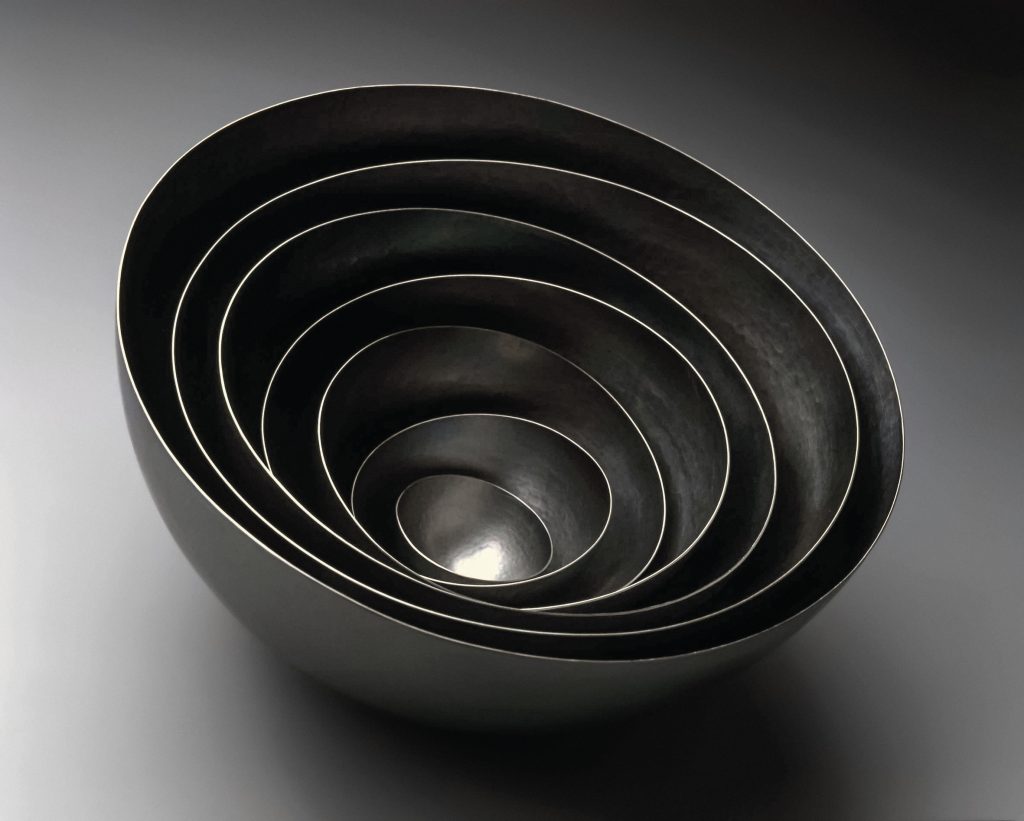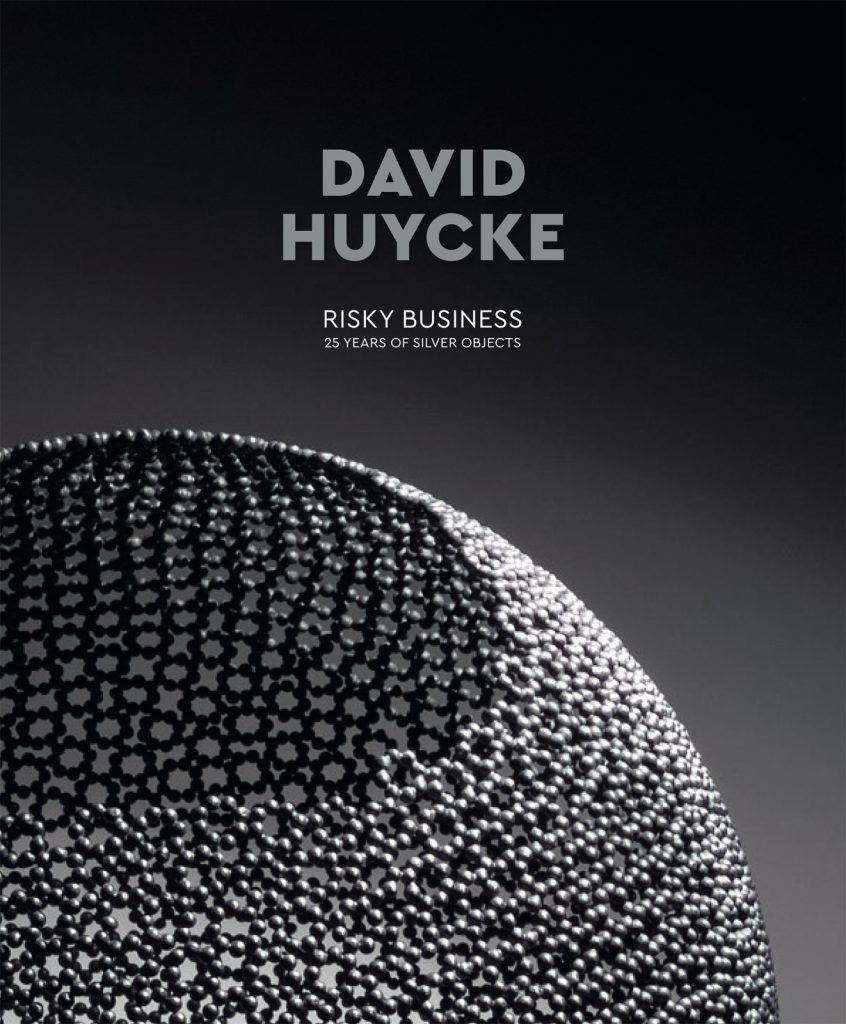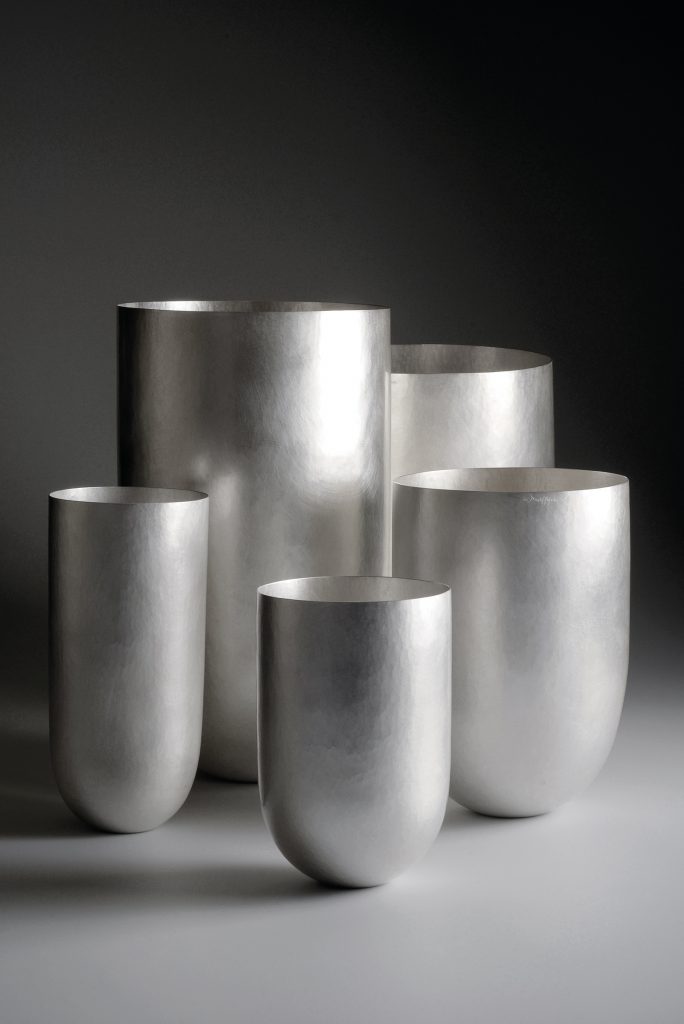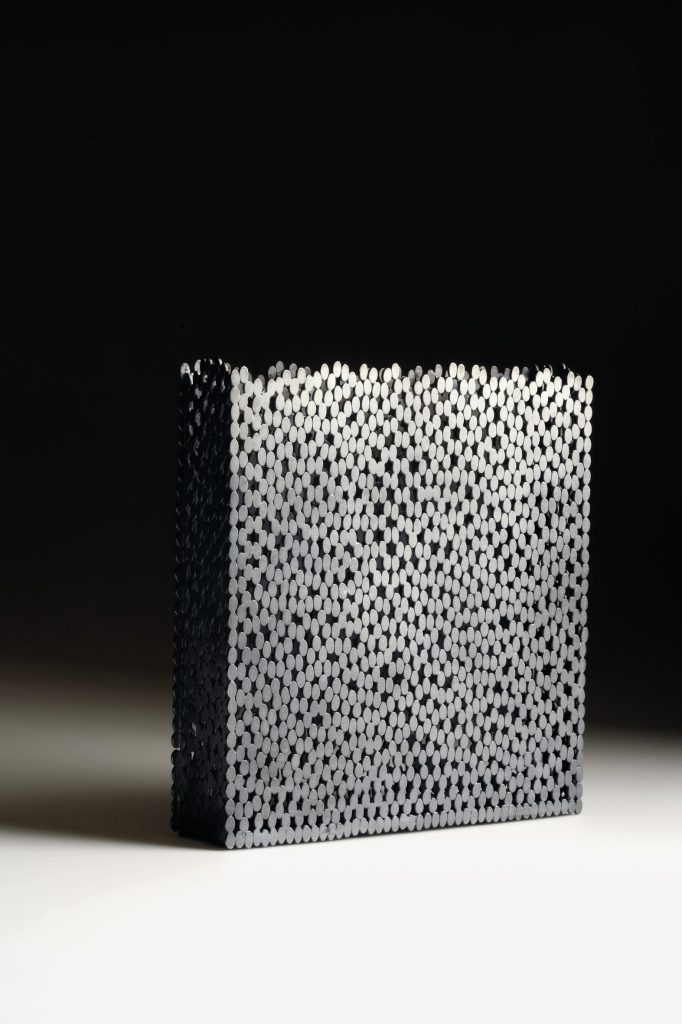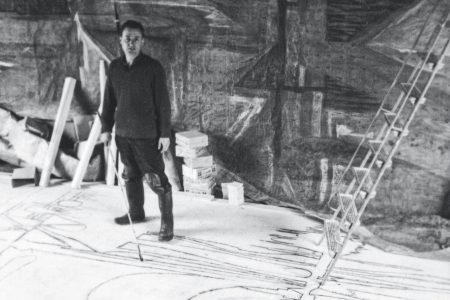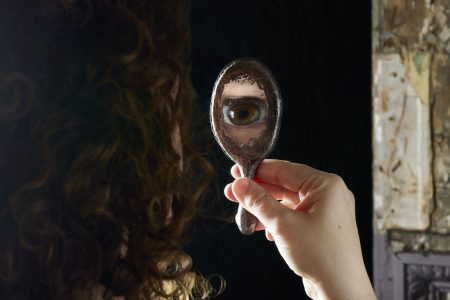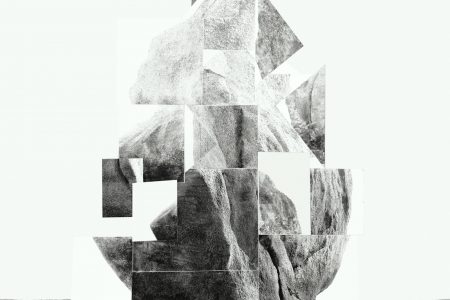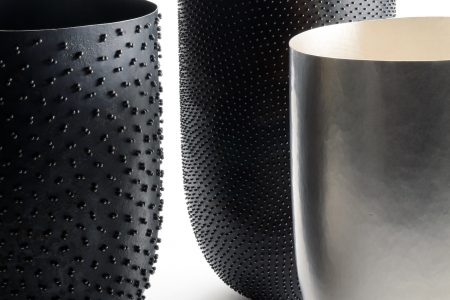Sphere by Sphere: David Huycke, the Granulation Pioneer
Renowned artist David Huycke discusses his unique practice in the technique of granulation and the “risky business” of silversmithing in the 21st century
Minimalism, geometry, repetition and rhythm—for 25 years, Belgian artist David Huycke has devoted thousands of hours to the craft of granulation. After studying as a jewelry designer in Antwerp in the 80s, Huycke met a master silversmith who taught him the tactics and ideas behind silver. From that point on, Huycke has pushed the limits of metal through an introspective and personal practice. He has become especially well-known for his modern take on the ancient technique of granulation which traditionally involves attaching metal spheres to the surface of an object. His work has been collected by museums worldwide including the Victoria and Albert Museum and the Design Museum Gent.
Huycke’s research-led practice has also seen him complete a Ph.D. entitled ‘Arts with The Metamorphic Ornament: Re-Thinking Granulation’ in 2010 and receive the Bavarian State Prize for Contemporary Crafts in 2007.
Celebrating Huycke’s career based on years of patient and time-consuming metal work is the recently published book ‘Risky Business: 25 Years of Silver Objects’ that catalogs his impressive oeuvre.
TLmag catches up with David Huycke to discuss his solo practice, the philosophy of spheres and the risky business of silversmithing in the 21st century.
TLmag: Your work has become iconic in its use of the ancient technique of granulation. What triggered your interest in this technique?
David Huycke: My interest in granulation started in 1996. This is an important date for me because there was a competition about granulation in Germany. It was a technique that we learned about in history lessons but never actually did and traditionally involves attaching spheres to the surface on an object for decoration.
At that time I was working with vessels with no decoration—pure and very minimalistic. I was not interested in the idea of decoration but thought “maybe I can build an object only through the spheres”. I started with a bowl as it was quite simple in principle. I made two of them and sent them into the competition. I did not get a prize but I was very happy with my pieces and, from then on, I developed this technique.
You have innovated a new way of using granulation that focuses on structure rather than decoration, despite this, you still share the practice with ancient artisans that were working with the tiny spheres over 5000 years ago. Where do all these perfectly formed spheres come from?
If you take a little piece of metal and heat it with a flame or in an oven until it melts, it automatically forms a sphere because liquid will always take the smallest shape possible. Therefore, the ancient Romans and Greeks could make very perfect spheres without any tools, only with heat.
You have developed the technique of building objects through granulation which is drastically different from their decorative function, what are the challenges of making the vessels structurally sound through granulation?
This technique is a challenge because metal is heavy so the connections need to be strong enough but they cannot be too strong because if you heat two spheres too much then they will become one again instead of joining. It takes the perfect combination of time, temperature flame intensity and flame distance. An added challenge is that spheres like to roll away.
The book shows that before granulation you worked with many techniques and have slowly focused in on granulation, do you ever get tired of working with it?
When I get to the end of working on a piece, I often think “well this is really the last time” because it takes several months to make something with granulation. Some of the pieces have more than ten thousand spheres which have to be cut as I cannot buy them. It is a huge effort. But then I have some time off and start again so apparently not.
Often artisans who produce work through repetitive processes describe this repetition as meditative, is this your experience in joining sphere after sphere?
I know of the literature about crafts and meditative states but I think my work is too intense to be meditative. When I work I have to heat the objects to just before melting point so, relating to the title of the book, it’s risky business. If I heat the piece too much it will collapse after weeks and weeks of working on it so it is not that meditative as I have to intensely focus.
Does the “risky business” also refer to other aspects of your practice?
On the one hand, it is about the danger of heating the piece too much and destroying it, but it is also about the global practice of silversmithing. It is a risky business if you want to do it as a career and business today. In every country, there are a few silversmiths but not many. The objects are very expensive because they take so much time, so it is hard to begin as a silversmith.
This risk seems like it was even greater for you at the beginning because you were pioneering a new process. When you first started doing granulation did you find it difficult that there were not any references to turn to?
After I started working with granulation, I started looking for other examples of combining the structural use of granulation with big objects. I was apparently the first and that was a gift but I was on my own.
To manage this, I started with the literature. Then I combined what I read with lots of experimentation. Like a scientist, I was thinking about alloys of metal, about what chemicals to add to make the bonding process easier and so on. It was a real technical process to find out how the granulation should be done.
How long did that experimentation phase go on for?
Even now, I am constantly trying new techniques. It is an ongoing search because you never make the same thing twice and when I make new pieces they tend to become more complex and more difficult, meaning that I have to make smaller spheres and more spheres. Therefore every piece is a different kind of research where I have to investigate about how to make and join the spheres, it is not a machine but it has logic in it that I need to discover.
My most recent pieces actually go back to the more traditional and decorative use of granulation. I think this worked very well but now I am remaking one of the first pieces but using a new alloy and so the experimentation goes on.
Why have you decided to venture into the surface decoration aspect of granulation after initially being quite resistant to this traditional use of the technique?
By doing this, I can make bigger objects. Using the spheres as a structure I can only go to a maximum of 25 to 30 centimeters in diameter before the object gets too fragile so I am now adding some new processes to my oeuvre.
Whether decorative or structural, granulation seems to be intrinsically linked its intriguing surface. How does a consideration of surface feature in your practice?
Surface is an important aspect of my work as the surface always reveals a lot about how the piece was made. If you use a hammer you can see the hammer stroke, by casting the surface of the plaster comes through and with granulation you have the granular surface of the piece.
What is interesting in granulation is that once you put the spheres on the piece then that’s it. You don’t file or solder anymore. It is kind of a final technique and I like the simple idea of making something. If I want to make a bowl I might take a sheet of metal and make a bowl or I take a lot of little spheres and make a bowl. I do not embellish it. I like simplicity not only in shape but in principle too.
In your practice, there seems to be a balance between the theoretical and historical research and the making process. Could you explain how these two aspects inform each other in your work?
In one way my Ph.D. was about history and theory, but it is also about technique and making. I’ve always been very interested in the philosophy of spheres, for example, the ideas of the kissing sphere which is when two spheres touch at one point. When I read about these kinds of things, it gives me so much inspiration to make pieces, so the reading is not just theoretical but it feeds my work and my ideas.
On the other hand, through making, I have also discovered theoretical principles. For example the ordering principles of spheres which is such an exciting world in areas like biology. The structures that are in my work are the same as a cactus or the core of a sunflower which are also based on ordering many little elements on a certain surface. Through making I discover more universal principles.
A selection of David Huycke’s work will be shown by Adrian Sassoon alongside ‘Risky Business: 25 Years of Silver Objects’ at TEFAF Maastricht from March 16 – 24
